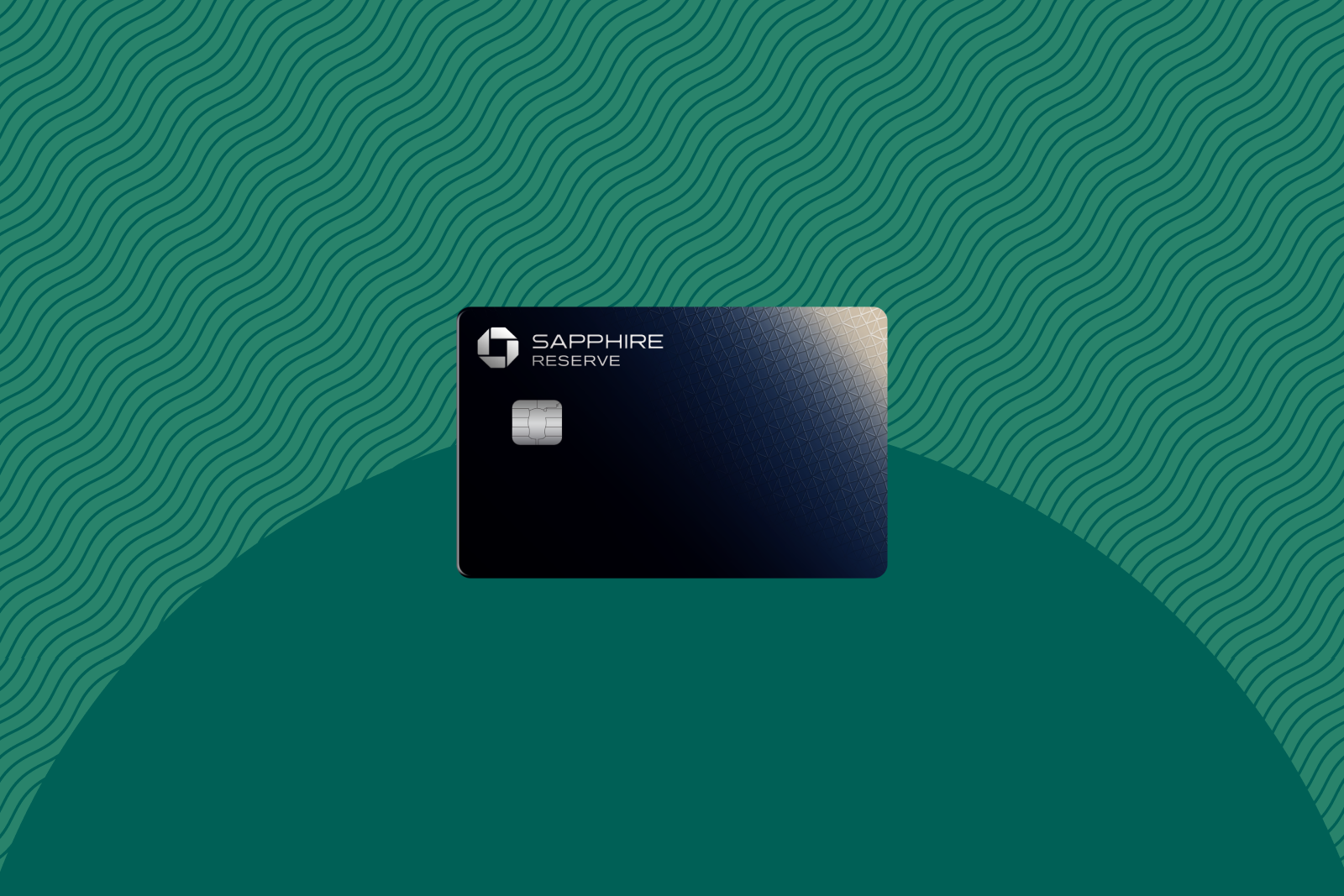As credit card annual fees continue to rise, it’s important to take a critical look at your wallet to ensure you’re getting the full value from your setup.
The Chase Sapphire Reserve® (see rates and fees) charges $795 per year. While that’s currently the highest annual fee in the premium travel rewards credit card market, its cost is offset by multiple perks and statement credits.
Is it worth it? Let’s review the benefits of the Sapphire Reserve and see if they provide enough value.
Welcome bonus
New applicants to the Chase Sapphire Reserve can earn 100,000 bonus points plus a $500 Chase Travel℠ promo credit* after spending $5,000 in the first three months from account opening.
*The promotional credit is valid for a one-time use only. If you apply the promotional credit to a transaction less than $500, you will forfeit the remaining balance.

This bonus is worth up to $2,550 per TPG’s August 2025 valuation of Chase Ultimate Rewards points at 2.05 cents each. This is more than triple the $795 annual fee.
However, you can only earn this bonus once in a lifetime, so you’ll want to maximize the other benefits on the card to make its place in your wallet worthwhile.
Related: How to redeem Chase Ultimate Rewards points for maximum value
Lounge access
A top perk for those who hold the Sapphire Reserve is airport lounge access for themselves and up to two guests.

Daily Newsletter
Reward your inbox with the TPG Daily newsletter
Join over 700,000 readers for breaking news, in-depth guides and exclusive deals from TPG’s experts
This access includes eight Chase lounges currently open and lounges included with a Priority Pass Select membership. Priority Pass grants access to more than 1,700 lounges worldwide. Plus, when flying with a Star Alliance airline, you’ll receive access to more than 20 Air Canada Maple Leaf lounges.
Sapphire Reserve authorized users receive the same airport lounge access for a $195 fee each year.

If you’re a frequent traveler who prefers stopping by the lounge before a flight, this card comes with access to high-quality Chase lounges and more than 1,700 Priority Pass locations.
However, if you don’t travel frequently or rarely visit lounges when you fly, the Chase Sapphire Preferred® Card (see rates and fees) is a better choice. You’ll still earn Chase Ultimate Rewards points, but you’ll pay only a $95 annual fee.
Related: Amex Platinum vs. Sapphire Reserve: Which card is right for you?
Flexible travel credit
The Sapphire Reserve provides one of the easiest travel credits to use on the market. This is the $300 annual travel credit that broadly applies to multiple travel purchases automatically.
This credit is automatically triggered by eligible purchases, which include bus tickets, campgrounds, ferries, flights, hotels and parking.
The travel credit alone slashes more than a third off of the Sapphire Reserve’s $795 annual fee, effectively lowering it to $495 a year.
If you’re eligible for a business card, the Chase Sapphire Reserve for Business℠ (see rates and fees) could also be a solid option for you. This card comes with the same annual travel credit and other benefits helpful for business owners.
Related: The 5 easiest travel credits to redeem
Useful travel benefits
Frequent travelers are the Sapphire Reserve‘s target audience, and the card provides multiple perks for them to offset the annual fee.
The Edit credit
Sapphire Reserve cardholders receive access to The Edit, Chase’s luxury hotel booking platform.
Booking with The Edit gives access to elitelike perks at various properties, including free daily breakfast for two, early check-in and late checkout (when available), and space-available room upgrades (when available).
Cardholders also receive two $250 biannual credits to use with The Edit (up to $500 annually). This applies when you book eligible properties with Chase Travel. You must book prepaid stays of at least two nights.

If you fully maximize the general travel ($300) and The Edit ($500) statement credits each year, that $800 total more than offsets the $795 annual fee.
However, if you don’t think you’ll maximize one or both of The Edit credits, or don’t mind staying in midrange properties, a hotel cobranded card or mid-tier general travel rewards card would be a more affordable option. The Citi Strata Premier® Card (see rates and fees), with its $95 annual fee, could be a good choice.
Complimentary elite status
The card provides Hertz Five Star status for perks when booking a rental, such as 25% bonus points on all Hertz rentals and complimentary one-car-class upgrades (subject to availability).
Cardholders also receive complimentary IHG One Platinum Elite status (through Dec. 31, 2027). This mid-tier status level includes bonus points, and complimentary upgrades and late checkout (when available).
If you spend $75,000 or more on the Sapphire Reserve in a calendar year, you’ll earn top-tier IHG One Rewards Diamond Elite status and Southwest Airlines A-List status.
Other travel rewards cards provide elite status for a lower annual fee, like The Platinum Card® from American Express, which gives cardmembers complimentary Gold status with Hilton Honors and Marriott Bonvoy (enrollment required) for a slightly lower $695 annual fee (see rates and fees).
Related: A comparison of luxury hotel programs from credit card issuers
Dining perks
The Sapphire Reserve offers solid perks for foodies. The card covers everything from food delivery to those hard-to-get reservations. If you like to spend on food, this card could be worth the annual fee if you maximize the credits.
Biannual dining credit
Cardholders receive two $150 biannual credits (up to $300 per year) toward reservations made through Sapphire Reserve Exclusive Tables through OpenTable.

Sapphire Reserve Exclusive Tables provides access to special dining events and hard-to-get reservations at select restaurants across the U.S. The more than 25 cities where these perks are available include New York City, Philadelphia and Miami. No prepayment or payment through OpenTable is required.
DoorDash benefits
The Sapphire Reserve also provides two $10 nonrestaurant promos and one $5 restaurant promo each month (totaling up to $300 per year) with DoorDash.
Cardholders also receive a complimentary DashPass membership for at least one year, worth $120. (Must be activated by Dec. 31, 2027.)
Sapphire Preferred cardholders also receive complimentary DashPass and one $10 nonrestaurant promo each month. This card charges a much lower annual fee than the Sapphire Reserve, so it could be worth considering if you’d like to pay less for similar benefits.
Related: Which purchases count as dining with the Chase Sapphire Preferred and Sapphire Reserve?
Lifestyle credits
The Sapphire Reserve also offers valuable lifestyle credits to take the sting out of the annual fee, including:
- Apple: Up to $250 annually in complimentary Apple TV+ and Apple Music subscriptions through June 22, 2027. (One-time activation per service through chase.com or the Chase mobile app is required.)
- Global Entry, TSA PreCheck or Nexus: Up to $120 as an application fee credit every four years.
- Lyft: $10 monthly in-app Lyft credits (up to $120 annually; through Sept. 30, 2027; the credit does not apply to Wait & Save, bike or scooter rides).
- Peloton: $10 per month for a Peloton membership (up to $120 annually; through Dec. 31, 2027; activation is required).
- StubHub and Viagogo: $150 biannually (up to $300 annually) to use on event tickets through StubHub or Viagogo through Dec. 31, 2027.

When added together, these credits provide up to $910, which offsets the Sapphire Reserve’s $795 annual fee. However, some may find these lifestyle credits challenging to maximize. Many are split into monthly or biannual increments, which requires a high level of organization.
If you don’t want to spend the extra time factoring these credits into your lifestyle, the Capital One Venture X Rewards Credit Card is a solid choice. It provides lounge access and luxury perks, including an annual $300 Capital One Travel credit. However, it doesn’t come with a long list of statement credits to offset its much lower $395 annual fee.
Related: How to make the most of the Sapphire Reserve’s lifestyle credits
Top-notch travel and purchase protections
As a Visa Infinite card, the Sapphire Reserve offers cardholders travel and purchase protection benefits, including:
You can access these benefits even if you pay for just a small part of the trip with your Sapphire Reserve, such as taxes and fees on a points redemption.
While you hope to avoid travel hiccups, they do happen. The Sapphire Reserve’s robust protections can make its annual fee worthwhile for the peace of mind they provide.
The Sapphire Reserve provides higher levels of travel insurance and purchase protection than the Chase Sapphire Preferred, its lower-fee counterpart. However, the protections are still quite similar, so it may be worth considering the $95-annual-fee card if you don’t require the strongest coverage.
Related: Should you get travel insurance if you have credit card protection?
Bottom line
The Chase Sapphire Reserve carries a high $795 annual fee.
However, the card provides a long list of benefits — including lounge access, travel credits, luxury benefits, lifestyle credits, dining perks and travel protections — to help offset that.
If you maximize the perks, the math works out. If you can’t keep up, a simpler option, such as the $95-annual-fee Chase Sapphire Preferred, may be better.
And, if you’re eligible for a business card, consider the comparable Chase Sapphire Reserve for Business or the $95-annual-fee Ink Business Preferred® Credit Card (see rates and fees) since they also earn valuable Chase Ultimate Rewards points.
To learn more, check out our full review of the Chase Sapphire Reserve.
Apply here: Chase Sapphire Reserve
For rates and fees of the Amex Platinum, click here.


